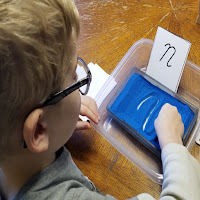Brand Advocates help to promote products for The Differentiation Shop in exchange for free digital products! You will be the first to know about new products and also updates to already existing materials!
Here are the basics:
Everyone will:
- Receive one free product per month of participation from The Differentiation Shop
- Send pictures of the product being used in your educational setting
- Share the product on your social media pages
- Agree to preview 3 products over the course of 3 consecutive months
You will also choose one of these important tasks:
- Proofread all or part of a product, depending on the size
- Suggest additional ways to differentiate products to meet your needs
- Write a product review
To apply to become a Brand Advocate for The Differentiation Shop, click here! If you are selected, you will be contacted by e-mail. There are only a few spots open each quarter, depending on the need of the shop. If you are not selected this quarter, please watch for next quarter's post and apply again!!
For the first quarter of 2019, The Differentiation Shop is need of teachers for grades 4-6 teaching language arts! If this fits you, we'd love to hear from you!

If you are selected, you will receive an e-mail with a list of potential products to preview for the quarter and further directions on how to communicate with the shop!
Looking forward to working with you!


















































